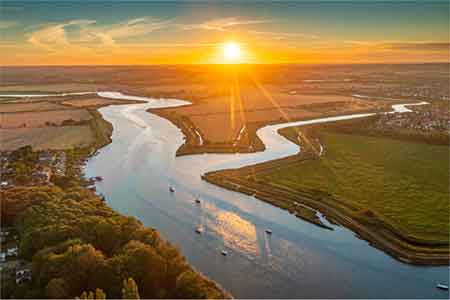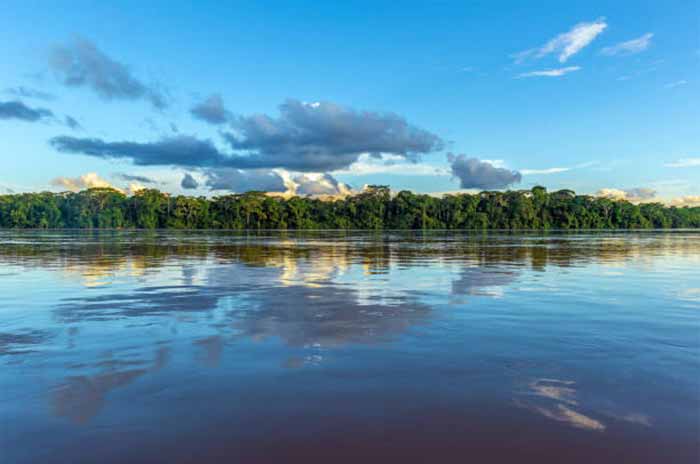If you have ever wondered about the length and width of a river, you’re not alone. There are a lot of rivers in the world. You’ve probably heard of the Amazon River, the Yellow River, and the Congo River. You’ve probably even heard about the Oil Rivers of Nigeria. These rivers played an important role in making Nigeria one of the largest oil producing nations in the world.
Yangtze River

Located in China, the Yangtze River is one of the world’s longest rivers, and is considered a world heritage site. Its historical significance dates back thousands of years, when it was a political boundary between the north and south of China. At that time, it was difficult to travel across the river, and many battles took place along its banks, including the Battle of Red Cliffs during the Three Kingdoms era.
The Yangtze River is a major tourist attraction in China, with several popular cities along its banks. The Yangtze River flows through eleven Chinese provinces, including Anhui, Hubei, Qinghai, Sichuan, Yunan, and Tibet. Its gorges are particularly deep, ranging from around 500 feet to over 180 metres.
Yellow River
The Yellow River is one of the world’s longest rivers and is one of the cleanest. Its water volume averages about three inches per mile or five centimeters per kilometer. The riverbed is made up of silt and mud and is covered in reeds. The delta stretches across an area of approximately 2,100 square miles. During low tide, the riverbed becomes obstructed by a sandbar that is eight or nine feet deep.
The middle course of the Yellow River extends over two thousand-seven hundred kilometers (two thousand eight hundred miles). It begins in the Bayankala Mountains and flows through a mountainous region of Inner Mongolia. It has numerous rapids and branches into numerous distributary channels.
Amazon River
Although the Amazon is one of the largest and longest rivers in the world, it is not entirely clear where it originated. Scientists have theorized that the river originates from a glacial stream on the top of the Peruvian Andes, a peak that is about 700 km southeast of Lima. During the wet season, the Amazon can grow up to 30 miles wide. It flows through several countries in South America, including Brazil, Peru, Ecuador, and Venezuela. The Amazon basin is the largest in the world and covers over 40 percent of South America.
The Amazon River was named by Spanish soldier Francisco de Orellana, who was the first European to explore its length in 1541. He chose the name “Amazon” after a tribe of female warriors who reminded him of the myths of Greek gods. The Amazon River and the surrounding land system are part of the Amazon basin, which covers almost half of the continent of South America, or 2.67 million square miles.
Congo River
The Congo River starts in the savannas of Central Africa and gradually widens. It then enters a 75-mile-long canyon of rapids known as the “Gates of Hell,” causing it to gain speed. When it emerges from the canyon, the Congo enters a tropical rainforest area called Lualaba. Its flow increases dramatically from Kisangani to Kinshasa.
This area is home to a number of wildlife species. Some of the Congo River ecosystem services include regulating climate, preventing drought, conserving unique species, and providing food and medicine to local people. The Congo River Basin’s rainforest is also so valuable for storing carbon dioxide that scientists have called it the world’s second lungs. The Congo River Basin has been home to humans for more than 50,000 years, and the people who live there are made up of 150 different ethnic groups.
Yenisey-Angara-Selenga River system
The Yenisey-Angara River system is the largest and longest river system in the world, stretching for over 22,000 kilometers (14,100 miles) from north to south. Its upper basin is mountainous, with steep valleys, and its southern portion is a vast, boggy plain. Fish and other wildlife thrive along the river, including grayling, lenok, and bug. There are also transitory waterfowl in the region. The Yenisei and its tributaries are considered one ecoregion.
Summary:
The Yenisey River system has three main branches: the Upper Yenisey, Middle Yenisey, and Lower Yenisey River systems. The upper Yenisey river flows north of Kyzyl, whereas the Lower Yenisey flows south of Kyzyl. The Yenisey River has a total length of 27,000 miles (39,080 km) from Kyzyl to the confluence with the Angara.
